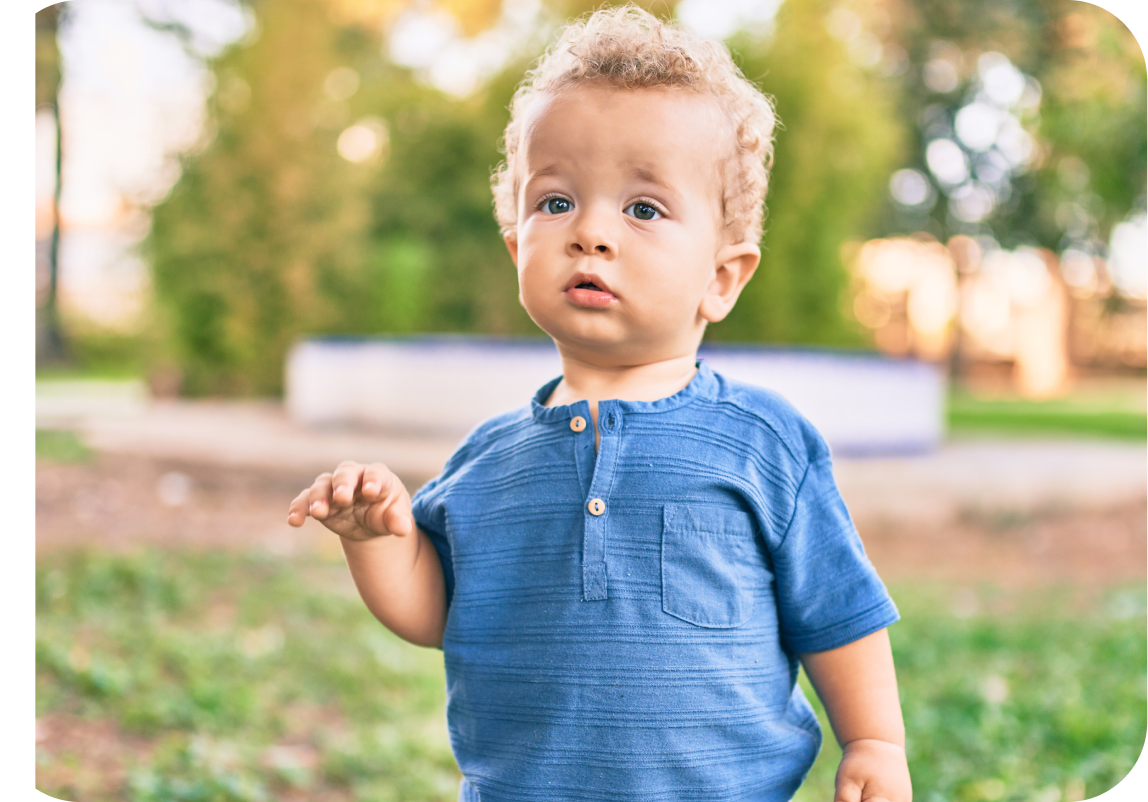NEXT UP
Growing up with CMPA
The WHO and other experts suggest, complementary feeding (CF) is the process of starting other foods and liquids when breastmilk alone is no longer sufficient to meet the nutritional requirements of infants.1-4 The WHO recommend exclusive breastfeeding for 6 months, followed by the introduction of CF alongside breastfeeding.1
Complementary foods are considered necessary for both nutritional and developmental reasons, and are an important step in the transition from milk feeding only, to the addition of family foods.4 Furthermore, an energy gap develops, usually beyond 6 months of age, which needs to be covered by complementary foods. In infants with an established food allergy such as cow's milk protein allergy a replacement hypoallergenic formula also supports the ‘’energy gap’’. This is represented in Figure 1., showing the energy provided by breastmilk and when the energy gap starts to develop.

Adapted from WHO, 20095
In infants with CMPA, there is no evidence that delaying the introduction of other potentially allergenic foods (e.g., wheat, soya, egg, fish, nuts) will prevent the development of additional food allergies. In fact, evidence is building that early, rather than delayed, introduction to these foods could be beneficial.6
In infants with established CMPA, CF should therefore begin as for an infant without a food allergy (around 4-6 months but not before 4 months). It has been suggested, for example, in the UK guidance that “These children may benefit from the earlier introduction of cooked egg and then peanut alongside other solids, from around 4 months of age” but not before 4 months.7 While some experts suggest that other allergens should be introduced one at a time.8

Infants with CMPA have a higher risk of nutrient deficits due to dietary exclusions, for example, breastfed babies on a maternal exclusion were at risk of B12 deficiency, while initiation of CF was associated with a better B12 status.9 In addition, vitamins E and D9-11, calcium11, iron9 and iodine12 were commonly deficient in infants with CMPA. Supplying these nutrients in a ‘’safe’’ format such as in allergen-free enriched baby cereals, and/or hypoallergenic formula, is considered beneficial.12
NB. Infants with CMPA should always be referred to an allergy specialist for advice.13
Small amounts of different food groups e.g., vegetables, fruits, starchy foods, protein sources without added salt or sugar should be included7 – (see table for some examples).
| FOOD GROUPS | NUTRIENTS PROVIDED | EXAMPLES |
|---|---|---|
| Carbohydrate | Energy | Cereals (rice, maize, wheat), potatoes, sweet potato, for children with CMPA ensure foods are dairy protein free! |
| Proteins from plant or animal origin | Protein, energy, iron, zinc | Red meat, chicken, fish, eggs, beans, peas, lentils, nuts (ground and tree), seeds |
| Dairy, or dairy replacement when CMPA | Protein, energy, vitamins, minerals | Dairy products, fortified cereals, or non-diary options and replacement hypoallergenic formula when CMPA |
| Fruits and vegetables | Carotenes, folate, vitamin C, some minerals and trace elements | Carrots, butternut, bananas, apples, strawberries, spinach, broccoli (not limited to these) |
| Fats & oils | Energy, essential fatty acids, fat soluble vitamins | Vegetable and seed oils, margarine, butter, dairy free spreads when CMPA |
Common allergy causing foods can be introduced one at a time. This is because infants with CMPA have a 50% higher risk of developing other allergies.8 This also makes it easier to identify a problem food if an allergic reaction does occur. Once introduced and tolerated, these foods should be regularly included the infant's diet.8
For example, in the UK they suggested eczema should be well-controlled before introducing allergens into the diet i.e., cleared prior to introducing allergenic foods (to help detect if tolerant).7
The more diverse the diet the better. An increase in the diversity of the diet was associated with better growth indices in young children14-15 and may be associated with reduced allergic outcomes.15
A variety of different foods and flavors should be introduced while avoiding cow's milk/dairy proteins. During the introduction of foods, breastmilk or hypoallergenic formula will contribute a major part of the nutrients needed by the infant and can also be used in recipes.
Some food labels will state “may contain milk”, or “made in a factory that handles milk”, to let you know that there may be a risk of cross contamination. In this case, it can be very difficult to know what the risk of an allergic reaction would be. Therefore, the safest approach is to avoid the food.
Manufacturers can change food ingredients from time to time without notifying customers so parents/ caregivers should be advised to check food labels every time they buy a product, even if it’s something they’ve checked before and it was cows' milk-free.
When buying unpackaged or ‘loose’ food from a café or market ask staff if they have an allergen list for those foods and if not, or if you are in any doubt, then they should not take the risk.
Yes, behavioral feeding issues are more common in infants and young children with a diagnosis of CMPA due to fear of a repeated reaction (especially when severe CMPA).19
During illness HCP commonly encourage that the child is given his/her favorite foods as well as small frequent meals, but CF should not be stopped. Furthermore, during illness encourage extra fluids, including more frequent breastfeeds or hypoallergenic formula (when formula-fed).5

Bottle-fed infants and children with CMPA, especially those with gastrointestinal issues, appear to be at a higher risk of deficits when not consuming a hypoallergenic formula.20 While unfortified complementary foods that are 100% plant-based may not provide sufficient amounts of certain key nutrients (eg. iron, zinc, vitamin B6 and calcium).2,5 Use of fortified cereals can boost the intake of these nutrients, which is especially important in those following vegetarian and vegan diets.